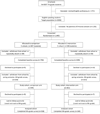It's Your Game: Keep It Real: delaying sexual behavior with an effective middle school program
- PMID: 20113923
- PMCID: PMC2818029
- DOI: 10.1016/j.jadohealth.2009.06.008
It's Your Game: Keep It Real: delaying sexual behavior with an effective middle school program
Abstract
Purpose: This study tested the effects of a theory-based, middle-school human immunodeficiency virus, STI, and pregnancy prevention program, It's Your Game: Keep it Real (IYG), in delaying sexual behavior. We hypothesized that the IYG intervention would decrease the number of adolescents who initiated sexual activity by the ninth grade compared with those in the comparison schools.
Methods: The target population consisted of English-speaking middle school students from a large, urban, predominantly African-American and Hispanic school district in Southeast Texas. Ten middle schools were randomly assigned either to receive the intervention or to the comparison condition. Seventh-grade students were recruited and followed through ninth grade. The IYG intervention comprises 12 seventh-grade and 12 eighth-grade lessons that integrate group-based classroom activities with computer-based instruction and personal journaling. Ninth-grade follow-up surveys were completed by 907 students (92% of the defined cohort). The primary hypothesis tested was that the intervention would decrease the number of adolescents who initiated sexual activity by the ninth grade compared with those in the comparison schools.
Results: Almost one-third (29.9%, n=509) of the students in the comparison condition initiated sex by ninth grade compared with almost one-quarter (23.4%, n=308) of those in the intervention condition. After adjusting for covariates, students in the comparison condition were 1.29 times more likely to initiate sex by the ninth grade than those in the intervention condition.
Conclusions: A theory-driven, multi-component, curriculum-based intervention can delay sexual initiation up to 24 months; can have impact on specific types of sexual behavior such as initiation of oral and anal sex; and may be especially effective with females. Future research must explore the generalizabilty of these results.
Copyright 2010 Society for Adolescent Medicine. Published by Elsevier Inc. All rights reserved.
References
-
- Centers for Disease Control and Prevention. Atlanta: U.S. Department of Health and Human Services, Centers for Disease Control and Prevention; 2009. HIV/AIDS Surveillance Report 2007.
-
- National Office of AIDS Policy. Youth and HIV/AIDS 2000: A new American agenda. [Accessed May 1, 2008]. [Online]. Available at: < http://www.thebody.com/content/art36.html>.
-
- Hamilton BE, Martin JA, Ventura SJ, et al. Births: Preliminary data for 2007. National Vital Statistics Report. [Accessed March 21, 2009]. [Online]. Available at: < http://www.cdc.gov/nchs/data/nvsr/nvsr57/nvsr57_12.pdf>. - PubMed
-
- Shanklin SL, Brener N, McManus T, Kinchen S, Kann L. 2005 Middle School Youth Risk Behavior Survey. Atlanta: U.S. Department of Health and Human Services, Centers for Disease Control and Prevention; 2007. [Accessed March 21, 2009]. Available at: < http://www.cdc.gov/HealthyYouth/yrbs/middleschool2005/pdf/YRBS_MS_05_ful...>.
-
- Centers for Disease Control and Prevention. Youth Risk Behavior Surveillance: United States, 2007. MMWR Morb Mortal Wkly Rep. Surveillance Summaries. 2008. [Accessed March 21, 2009]. p. SS-4. Available: < http://www.cdc.gov/HealthyYouth/yrbs/pdf/yrbss07_mmwr.pdf>. - PubMed
Publication types
MeSH terms
Grants and funding
LinkOut - more resources
Full Text Sources
Medical


